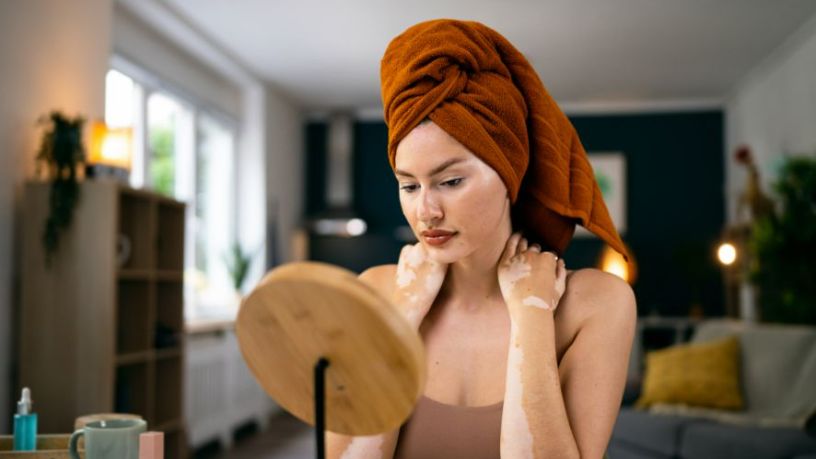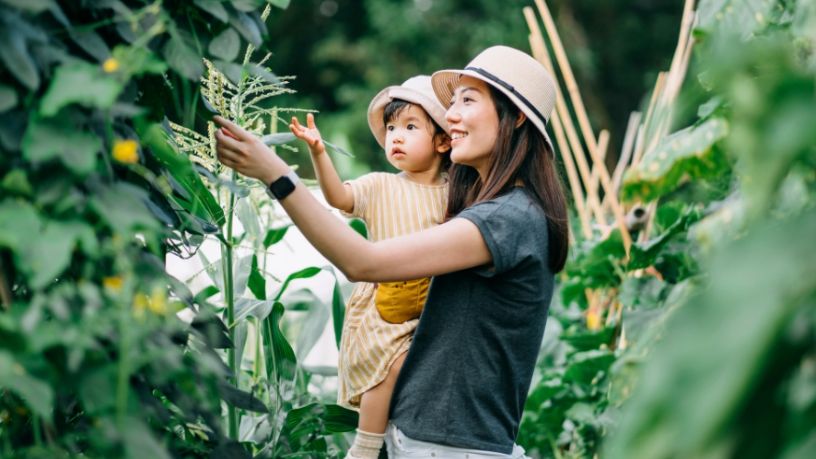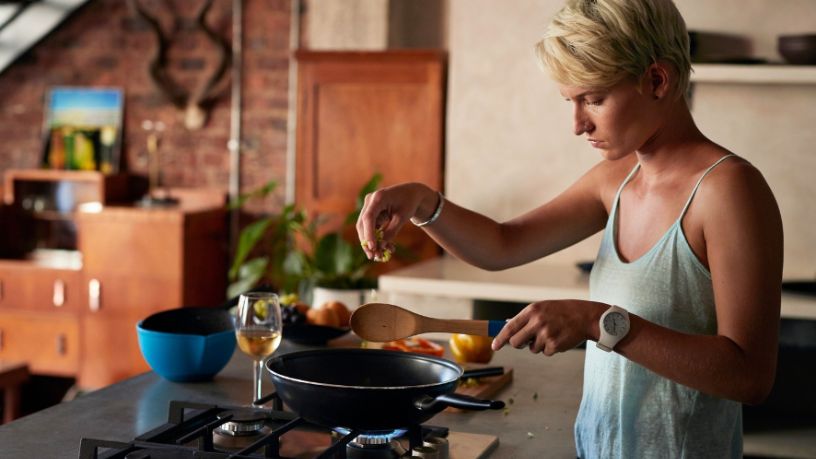There are several easy things you can do at home to decrease the amount of chemicals coming into contact with your food.
On this page
Key takeaways
Some materials hold more bacteria than others, while plastics can leach into food during storage, heating and cooling.
Search for low tox alternatives or reuse old glass jars.
Looking to reduce the toxins in your kitchen but not sure where to start? We asked the author of ‘Low Tox Life: Food’, Alexx Stuart, to share 3 simple swaps you can make today.
1. Replace non-stick pots and pans
While Alexx usually says the most sustainable cookware you have is the stuff you already own, she recommends phasing out any ‘non-stick’ chemically coated products you have and opting for stainless steel, cast iron or enamel.
Some older non-stick coatings were manufactured with a forever chemical called perfluorooctanoic acid (PFOA). This high-risk chemical is now prohibited in Australia outside of research settings.1 The use of this chemical has been phased out and even when it is used to make non-stick products, it’s understood to be of little risk to our health when used at normal cooking temperatures.2
When it comes to stainless or cast iron, you can season the pan and oil it after cleaning to build up your own home-made non-stick coating.
“I’m a big advocate for buying less and spending more on quality such as with ceramic coated cookware,” explains Alexx. “I’ve still got my mother’s and grandmother’s ceramic roasting dishes and frying pans from the 1970s.”
2. Swap plastic storage containers for glass
Just as chemicals from plastic containers like phthalates and bisphenol A (BPA) can leach into your food if it’s reheated in the microwave3, the same may happen at a slower pace with storage.
“These chemicals are known endocrine disruptors, which means they interfere with natural hormone levels like oestrogen and testosterone,” says Alexx.4
Research suggests they can also affect the heathy growth and development of children.5
The longer 2 things are next to each other, the more transfer happens, particularly in hot and humid climates.
“For long-term pantry storage, I recommend switching to glass or stainless steel cannisters,” says Alexx. “Ceramic or enamel are great too, but I know a lot of people like to be able to see what’s inside.”
“If you want a bit of a boho vibe and you're happy with mix and match, I recommend just saving all your glass jars,” she says.
When it comes to the freezer, Alexx opts for glass casserole dishes with the plastic lids.
Just don’t forget to leave a small gap between the plastic and the food itself so they aren’t touching.
3. Use wooden chopping boards, not plastic
There are pros and cons to using plastic or wooden boards for chopping.
Plastic boards may be easy to keep sanitised, but they’re less environmentally friendly than wood.
“Just think about that old plastic chopping board. You may be cutting microplastic into your dishes with every stroke of the knife,”6 says Alexx. “And little divots form that are prime spots for bacteria to wedge into. How can that be good for us?”
When it comes to wooden chopping boards, choose hardwood over softwood. Hardwood boards don’t scratch as easily, meaning bacteria won’t build up in the divots from chopping.
Whichever boards you use, have one board exclusively for chopping raw meat and seafood. And keep your boards scrupulously clean, replacing them when they become worn.
While detoxing your kitchen cupboards might mean some initial financial commitment, think about how many cheap chopping boards, pans or utensils you’ve gone through over the years.
“For me, an important part of the low tox journey is to get comfortable with the idea of wanting less,” says Alexx. “If we’re buying less, we can afford to pay for (or save up for) quality pieces that will stand the test of time.”

At Bupa, trust is everything
Our health and wellbeing information is regularly reviewed and maintained by a team of healthcare experts, to ensure its relevancy and accuracy. Everyone's health journey is unique and health outcomes vary from person to person.
This content is not a replacement for personalised and specific medical, healthcare, or other professional advice. If you have concerns about your health, see your doctor or other health professional.
1Australian Government, Department of Climate Change, Energy, the Environment and Water. (2024). Perfluorooctanoic acid (PFOA) and related substances. Australian Government, Department of Climate Change, Energy, the Environment and Water.
2Jones, O. A. H. (2023). You’ve read the scary headlines – but rest assured, your cookware is safe. The Conversation.
3National Institute of Environmental Health Sciences. (2023). Bisphenol A (BPA). National Institute of Environmental Health Sciences.
4Bray, K (2019). What you need to know about endocrine-disrupting chemicals. Choice.
5Washington State Department of Health. (2014). BPA and Phthalates: Chemicals found in our homes. Washington State Department of Health.
6Luo, Y., Chuah, C., Al Amin, M., Khoshyan, A., Gibson, C. T., Tang, Y., Naidu, R., & Fang, C. (2022). Assessment of microplastics and nanoplastics released from a chopping board using Raman imaging in combination with three algorithms. Journal of Hazardous Materials,
You might also like...
Clean beauty: What does it mean?
There are whole sections dedicated to clean beauty at some of Australia’s biggest beauty retailers. But what does ‘clean beauty’ mean, and is it worth it?
Natural vs organic skincare: What’s the difference?
What’s the difference between ‘natural’ and ‘organic’ skincare, and are these products really better for your face and the planet?
Living low tox: What it is and how you can do it
Let’s talk toxins and how you can reduce them in your life.
Are gas stoves bad for your health and the environment?
Humans have been cooking with gas for a long time, but with damaging effects on our health and climate, it may be time to change.





